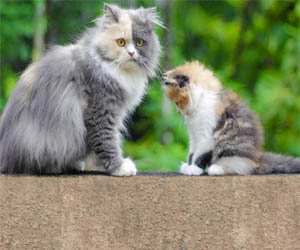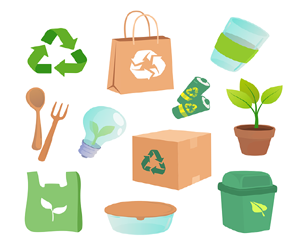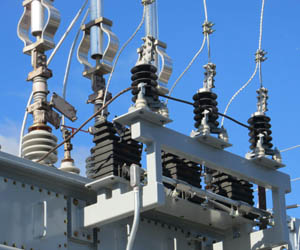


Paving The Way For A Greener Planet

As the world grapples with the ever-growing challenge of managing waste, innovative solutions are needed to convert this mounting problem into an opportunity. Waste-to-energy (WTE) technology offers a remarkable approach to not only eliminate heaps of trash but also generate clean, renewable energy. This groundbreaking process involves the transformation of various waste materials, including municipal solid waste, agricultural residues, and industrial by-products, into valuable resources like electricity, heat, and fuels. By harnessing this potential, we can mitigate environmental pollution, reduce dependence on fossil fuels, and contribute to a more sustainable future.
Transforming Trash Into Treasure
Waste-to-energy technology is a game-changer in the fight against waste and environmental degradation. Instead of allowing mountains of waste to languish in landfills, where they emit harmful greenhouse gases and pose long-term environmental risks, WTE plants convert this waste into energy. The process can involve incineration, gasification, or anaerobic digestion, depending on the type of waste material.
Clean And Renewable Energy Generation
One of the most significant advantages of WTE technology is the production of clean and renewable energy. When waste is burned or otherwise processed in WTE facilities, it generates electricity and heat. This not only reduces the burden on conventional power sources but also contributes to a significant reduction in greenhouse gas emissions.
Mitigating Environmental Pollution
WTE technology plays a vital role in mitigating environmental pollution. By incinerating waste at high temperatures, harmful pollutants are filtered out, ensuring that emissions are well within permissible limits. This reduces the release of toxic substances into the atmosphere and lessens the strain on our environment. Moreover, the controlled conversion of waste reduces the risk of groundwater contamination that can occur in landfills.
Reducing Dependence On Fossil Fuels
As the world strives to reduce its dependence on fossil fuels, WTE technology offers a crucial alternative. By converting waste into energy, we decrease the need for non-renewable resources and cut carbon emissions. This is a significant step towards achieving a more sustainable energy mix and combating climate change.
Promoting A Sustainable Future
Waste-to-energy technology is not just about waste disposal; it's about creating a more sustainable future. It promotes a circular economy by reusing valuable resources from waste. This process conserves natural resources and helps ensure a sustainable supply of energy for generations to come.
Challenges And Considerations
While WTE technology offers numerous benefits, it is not without challenges. Critics point out concerns about air emissions, the need for efficient waste sorting, and opposition from some environmental groups. Therefore, it is essential to implement strict regulatory standards and invest in state-of-the-art technology to address these issues and ensure that WTE facilities are environmentally responsible.
Waste-to-energy technology is a powerful tool in our quest for a greener planet. By converting waste into clean, renewable energy, mitigating environmental pollution, and reducing our reliance on fossil fuels, it represents a win-win solution for waste management and sustainable energy generation. To achieve a cleaner and more sustainable future, it's essential that governments, industries, and communities continue to invest in and support the growth of waste-to-energy technology.
What Your Feline Friend Is Saying
 Meowing: Meowing is perhaps the most well-known cat vocalization. Cats may meow to greet you, ask for food, or seek attention. The tone and intensity of the meow can provide clues about their feelings.
Meowing: Meowing is perhaps the most well-known cat vocalization. Cats may meow to greet you, ask for food, or seek attention. The tone and intensity of the meow can provide clues about their feelings.
Purring: Purring is generally a sign of contentment, but cats may also purr when in pain or discomfort, as it can be a self-soothing mechanism.
Hissing And Growling: These vocalizations are defensive and signify fear or aggression. A cat hisses or growls when feeling threatened or cornered.
Chirping And Chattering: Some cats make chirping or chattering sounds when they observe birds or small prey animals outside. It's believed to be an expression of excitement or frustration.
2. Body Language:
Cats use their bodies to convey a multitude of messages:
Tail Position: The position of a cat's tail is a significant indicator of their mood. A high, straight tail often means they are happy or confident, while a puffed-up tail indicates fear or aggression.
Ears: The position of a cat's ears is essential. Forward-facing ears suggest interest, while flattened ears signal anger or distress.


Unraveling The Conspiracy
 The Government Cover-Up Theory
The Government Cover-Up Theory
The theory of government involvement in crop circles centers around the idea that some circles are not the work of hoaxes or natural forces but rather secretive experiments conducted by government agencies. Proponents of this theory claim that governments are using crop circles to test advanced technologies, including anti-gravity systems and energy sources.
Evidence And Anecdotes
Conspiracy theorists point to several pieces of evidence to support their claims. They cite instances where military personnel were allegedly seen near crop circle formations shortly after they appeared. Some claim that unusual equipment was used to create the circles, equipment that goes beyond what ordinary hoaxers would possess.
Government Response
The official stance of governments around the world is that crop circles are primarily the result of human-made hoaxes. They argue that there is no substantial evidence to support the conspiracy theory.
Techniques For Awareness In Dreams
 Keep A Dream Journal: A dream journal is a crucial tool for developing lucid dreaming skills. Keep it by your bedside, and as soon as you wake up, jot down the details of your dreams. This practice enhances your dream recall, helping you identify recurring themes and symbols.
Keep A Dream Journal: A dream journal is a crucial tool for developing lucid dreaming skills. Keep it by your bedside, and as soon as you wake up, jot down the details of your dreams. This practice enhances your dream recall, helping you identify recurring themes and symbols.
Mnemonic Induction Of Lucid Dreams (MILD): The MILD technique involves setting a strong intention to remember your dreams and become lucid. Before falling asleep, repeat a mantra or affirmation to yourself, such as "I will become aware that I'm dreaming." The key is to truly believe in the intention.
Wake-Back-To-Bed (WBTB): The WBTB technique involves waking up in the middle of the night and then going back to sleep with the intention of becoming lucid. By disrupting your sleep cycle and returning to slumber, you increase the chances of entering a dream directly into a state of awareness.
Visualizations: Visualization techniques involve imagining yourself in a lucid dream scenario before falling asleep. This helps your subconscious mind prepare for the experience and increases the likelihood of becoming aware during the dream.
Progressive Muscle Relaxation: Relaxation exercises, such as progressive muscle relaxation, can help induce a calm and focused state before sleep. A calm mind and body can make it easier to enter the dream world with awareness.
Wake-Induced Lucid Dream (WILD): WILD is a technique that involves transitioning directly from wakefulness into a lucid dream. It requires concentration and awareness during the transition between wakefulness and sleep, often during a brief waking period in the middle of the night.
Hypnagogic State Exploration: Hypnagogia is the transitional state between wakefulness and sleep. Observing the visual and auditory hallucinations that often occur during this state can lead to lucid dream induction.
Deciphering The Enigma
 Deciphering Nostradamus' cryptic language often involves attempting to find connections between his quatrains and historical events. Believers argue that his predictions have accurately foretold significant occurrences, while skeptics assert that the vague and flexible nature of his language allows for post-event retrofitting. This post-event retrofitting is a process in which quatrains are interpreted in a way that aligns with past events, but it is a subjective exercise that can yield different results based on the interpreter's perspective.
Deciphering Nostradamus' cryptic language often involves attempting to find connections between his quatrains and historical events. Believers argue that his predictions have accurately foretold significant occurrences, while skeptics assert that the vague and flexible nature of his language allows for post-event retrofitting. This post-event retrofitting is a process in which quatrains are interpreted in a way that aligns with past events, but it is a subjective exercise that can yield different results based on the interpreter's perspective.
Some interpretive strategies include looking for numerological patterns, anagrams, and hidden meanings within the text. Believers often point to specific quatrains that they argue are validated by historical events, such as the French Revolution or the rise of Adolf Hitler. However, skeptics claim that this can be a form of cherry-picking, where only those quatrains that seem to align with history are emphasized, while the majority that do not are ignored.
Moreover, Nostradamus' quatrains are subject to translations, which can further complicate the process of deciphering his cryptic language. Translations may vary in their interpretations of the original French verses, leading to different outcomes when attempting to match them with historical or contemporary events.
One challenging aspect of deciphering Nostradamus' quatrains is the time lag between his writings and the events they supposedly predict. The gap of centuries between his time and the events in question can make it difficult to establish a direct correlation. Skeptics often emphasize that Nostradamus wrote in a historical context that was vastly different from the modern world. The societal, political, and technological landscapes have evolved significantly, making it challenging to attribute his writings to contemporary issues or phenomena.
A Guide To Feline Well-Being
 2. Regular Veterinary Care
2. Regular Veterinary Care
Routine veterinary care is crucial for maintaining your cat's happiness. Regular check-ups and vaccinations are essential for preventing illness and ensuring your cat's well-being. Your veterinarian can also address any health issues and provide guidance on preventive care.
3. Emotional And Social Needs
Cats may be independent, but they are not solitary creatures. They require social interaction and affection. Spend quality time with your cat, petting and talking to them. Building a strong bond with your cat is a surefire way to enhance their happiness.
4. Mental Stimulation
Cats are curious creatures that need mental stimulation to be content. Provide them with toys, puzzles, and interactive playtime. Toys like feather wands, laser pointers, and treat-dispensing puzzles can keep your cat engaged and mentally active.
5. Grooming And Hygiene
Regular grooming is essential for your cat's well-being and happiness. Brush your cat to prevent matting and reduce shedding. Cats may also require occasional baths. Keeping their claws trimmed and providing scratching posts helps maintain their hygiene.
6. Safe Environment
Creating a safe environment is crucial for your cat's happiness. Remove hazards, keep toxic substances out of reach, and offer stimulating objects and areas for exploration.
 Positive Reinforcement
Positive Reinforcement
Positive reinforcement is a cornerstone of effective dog training. This technique involves rewarding your dog with treats, praise, or affection when they exhibit the desired behavior. By associating good behavior with positive outcomes, your dog is more likely to repeat those actions. Consistency in providing rewards and timely reinforcement is key to success.
Clicker Training
Clicker training is a precise and efficient method that pairs a distinct sound (the click) with a reward. Dogs quickly learn to associate the click with good behavior and become more responsive to training cues. Clicker training allows for clear communication and is especially useful for teaching complex tricks and commands.
Obedience Training
Obedience training is a structured approach to teaching your dog essential commands like sit, stay, and come. This technique establishes a foundation for good behavior and ensures your dog's safety in various situations.
A Sustainable Path To A Greener Future
 Unlocking The Power Of The Elements: Natural power, often harnessed through renewable energy technologies, draws upon the immense energy stores provided by the Earth's natural elements. These elements include sunlight, wind, and water, each offering unique opportunities for generating electricity and addressing our growing energy needs.
Unlocking The Power Of The Elements: Natural power, often harnessed through renewable energy technologies, draws upon the immense energy stores provided by the Earth's natural elements. These elements include sunlight, wind, and water, each offering unique opportunities for generating electricity and addressing our growing energy needs.
Solar Energy: Solar power is a frontrunner in harnessing natural power. Solar panels capture energy from the sun's rays, converting it into electricity through photovoltaic cells. This technology has become increasingly efficient and affordable, making it accessible to both residential and industrial consumers. Solar power not only reduces reliance on fossil fuels but also contributes to energy independence.
Wind Energy: Wind turbines are another means of harnessing natural power. These towering structures transform wind energy into electricity, delivering a steady stream of clean power. Wind energy's versatility allows for both onshore and offshore installations, harnessing the power of the wind to generate electricity and reduce greenhouse gas emissions.
Hydropower: Hydropower has been harnessed for centuries, but modern technology has improved its efficiency and environmental sustainability. Dams, turbines, and generators convert the kinetic energy of flowing water into electricity. Large-scale hydropower plants play a crucial role in providing clean energy while maintaining consistent power production.
Environmental Benefits: One of the key advantages of harnessing natural power is the reduced environmental impact. Unlike fossil fuels, these natural power sources produce no harmful emissions, minimizing air and water pollution. They also conserve natural habitats and resources, as well as protect biodiversity.